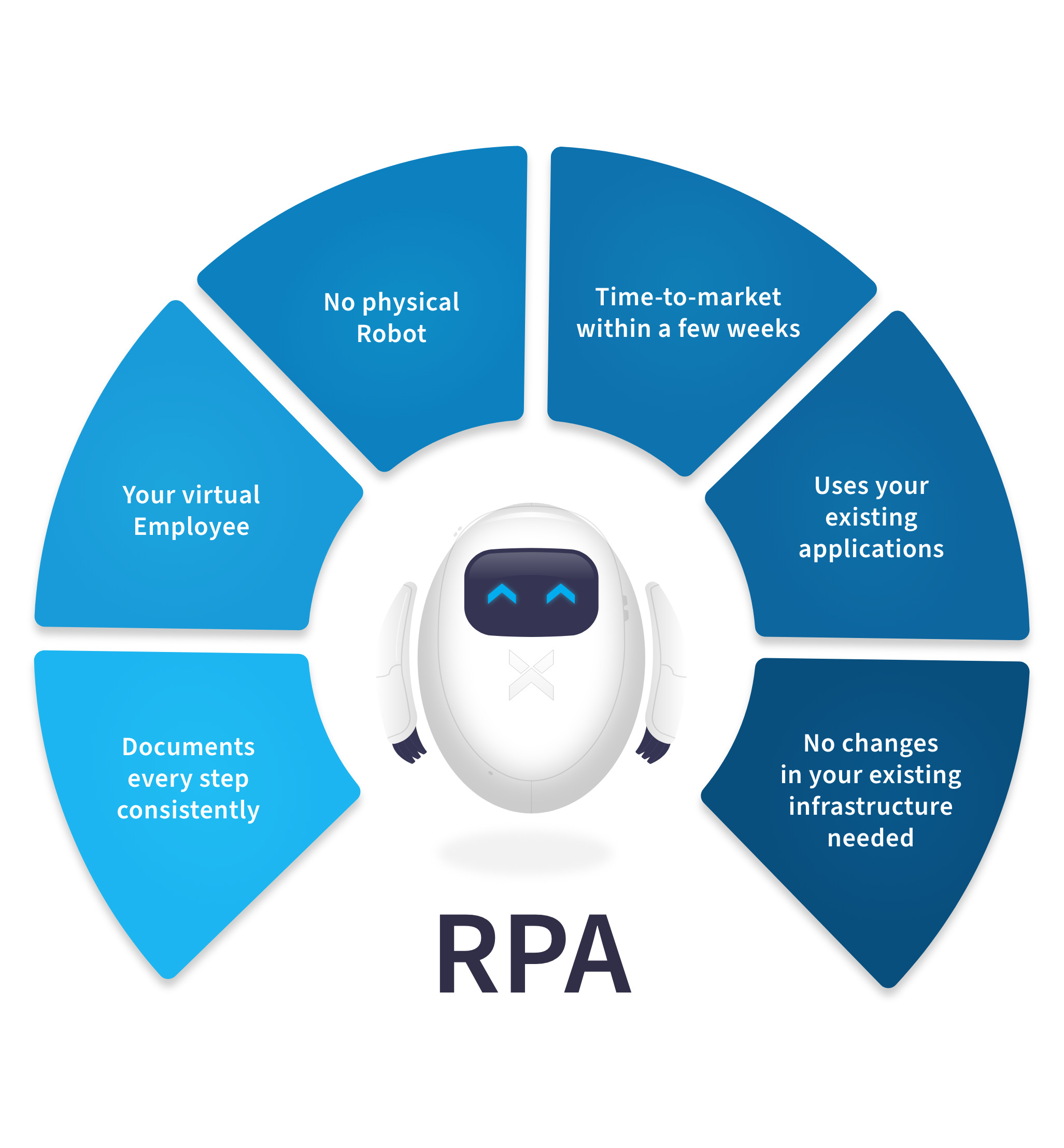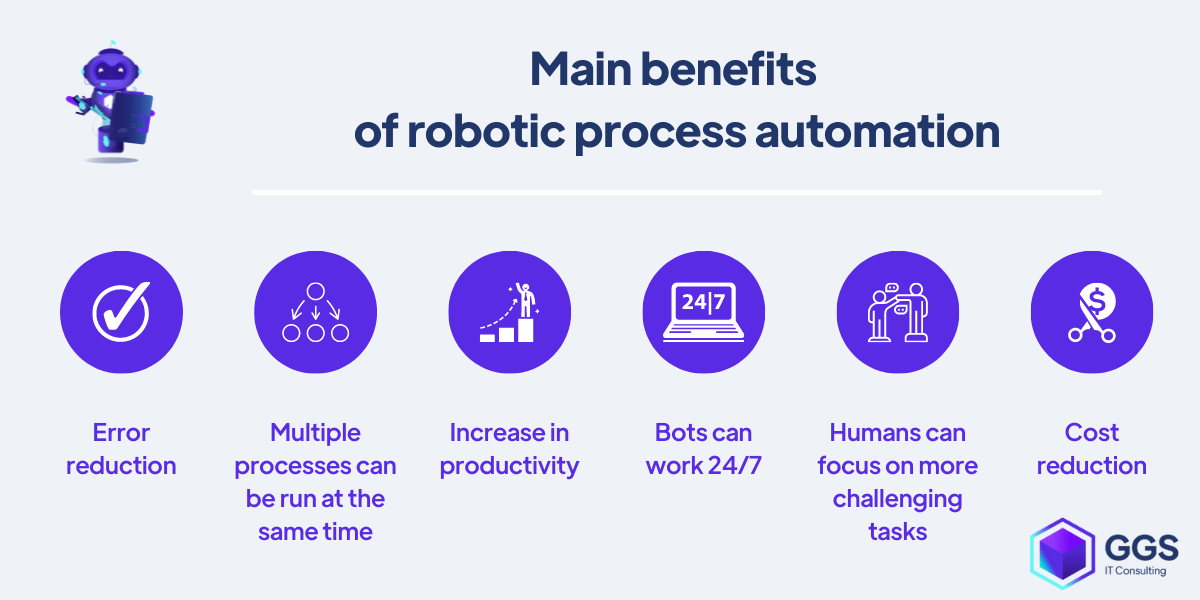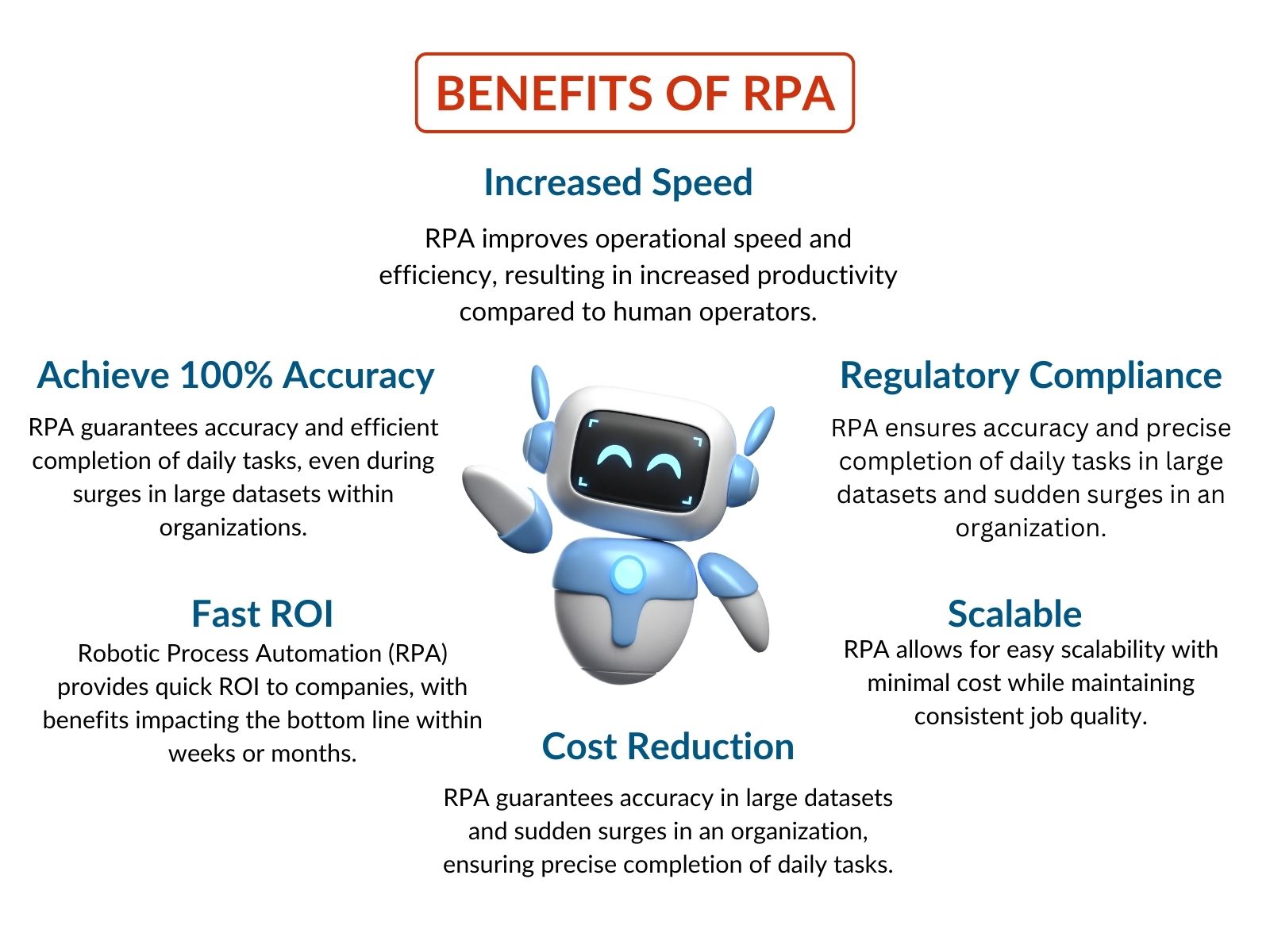Robotic Process Automation
(2025-08-17T06:33.711Z)
Perplexity Query
(2025-08-17T06:33
.711Z)
Question:
Write a comprehensive one-page article about "Robotic Process Automation".
Response from sonar-pro:
Robotic Process Automation (RPA) is a digital technology that uses software robots, or "bots," to automate repetitive digital tasks traditionally performed by humans. Its significance lies in its power to drive efficiency and innovation by freeing employees from routine work, allowing them to focus on more value-adding activities—a crucial advantage amid growing digital transformation demands in modern business environments.
[3ryy50]
[w0851m]

RPA works by mimicking how humans interact with software applications, performing tasks such as data entry, file transfers, document reviews, and information extraction directly from user interfaces.
[w0851m]
[tly0yf]
For example, an RPA bot can log into an accounting system, extract invoices, and enter relevant data into a separate database without requiring manual intervention. This user-centric approach allows bots to bridge automation gaps that traditional automation methods miss, especially in processes that lack APIs or where legacy systems are involved.
[3ryy50]
[5787hr]
[w0851m]
Practical use cases for RPA are extensive:
- In banking, RPA bots process loan applications and verify customer documents.
- In healthcare, bots handle patient data transfers and appointment scheduling.
- In insurance, RPA automates claims processing and compliance checks.
The benefits of RPA are substantial:
- Scalability and compliance: Organizations can easily scale automated processes and enforce strict compliance standards, as bots follow prescribed workflows every time and provide full audit trails. [5787hr]
However, challenges exist. RPA initiatives can falter if underlying processes are inefficient, often automating "bad" workflows faster instead of improving them. Integration with advanced AI technologies can also be difficult, and managing large fleets of bots securely and reliably requires robust governance and change management practices.
[5787hr]
[w0851m]
[tly0yf]
Additionally, concerns around job displacement can arise, though most organizations shift human roles toward more strategic functions.
[5787hr]
[tly0yf]

Current adoption of RPA is widespread and accelerating. Leading vendors such as UiPath, Automation Anywhere, and Blue Prism dominate the market, offering powerful, scalable platforms that support advanced integration and AI-assisted automation.
[3ryy50]
[5787hr]
RPA is a cornerstone technology in digital transformation initiatives across industries, with financial services, healthcare, insurance, and manufacturing among the most active adopters.
[3ryy50]
[w0851m]
Recent trends include combining RPA with machine learning and natural language processing—this "intelligent automation" enables bots to handle unstructured data, interpret emails, and even make simple decisions.
[3ryy50]
[w0851m]
[tly0yf]
The RPA market continues its rapid growth, with organizations increasingly seeking to automate more complex workflows, not just front-line data manipulation. Vendors are adding features such as cloud-based deployment, analytics dashboards, and low-code development tools, making RPA more accessible and adaptable.
[5787hr]
[w0851m]
The focus is shifting from automating individual tasks to orchestrating end-to-end business processes.
[5787hr]
[tly0yf]

Looking ahead, RPA will evolve alongside advances in artificial intelligence and cloud computing. Expect smarter bots capable of learning from human actions, making contextual decisions, and orchestrating complex, multi-step business processes across disparate systems. As organizations prioritize agility, customer experience, and resilience, RPA’s role as a driver of digital transformation and workforce evolution will only expand.
[3ryy50]
[5787hr]
[tly0yf]
In summary, Robotic Process Automation is reshaping the future of work by automating routine tasks, boosting productivity, and enabling businesses to adapt quickly to new challenges. As RPA technology matures, its transformative impact is set to deepen across virtually every sector, promising even greater efficiency, innovation, and human potential.
Citations
[vmpji2] 2025, Jun 16. 15 benefits of robotic process automation - Lumenalta. Published: 2024-12-19 | Updated: 2025-06-16
[3ryy50] 2025, Jun 16. What is Robotic Process Automation - RPA Software - UiPath. Published: 2025-01-01 | Updated: 2025-06-16
[5787hr] 2025, Jun 16. What is Robotic Process Automation (RPA)? An Enterprise Guide.. Published: 2025-05-29 | Updated: 2025-06-16
[w0851m] 2025, Mar 14. What is Robotic Process Automation (RPA)? | Laserfiche Blog. Published: 2025-03-11 | Updated: 2025-03-14
[tly0yf] 2025, Jul 22. What is Robotic Process Automation (RPA)? - IBM. Published: 2021-09-22 | Updated: 2025-07-22